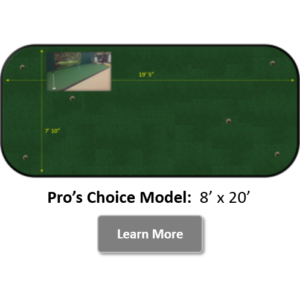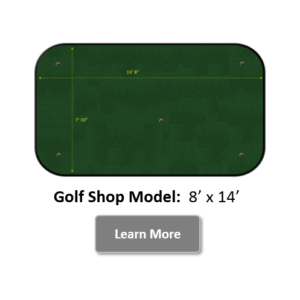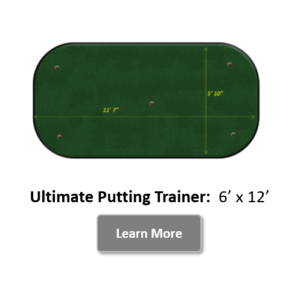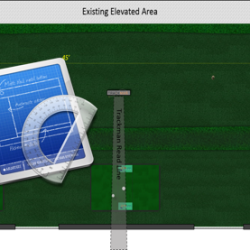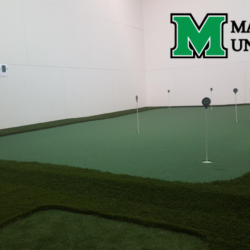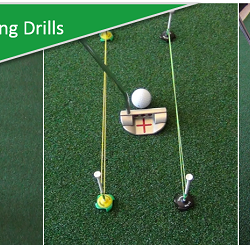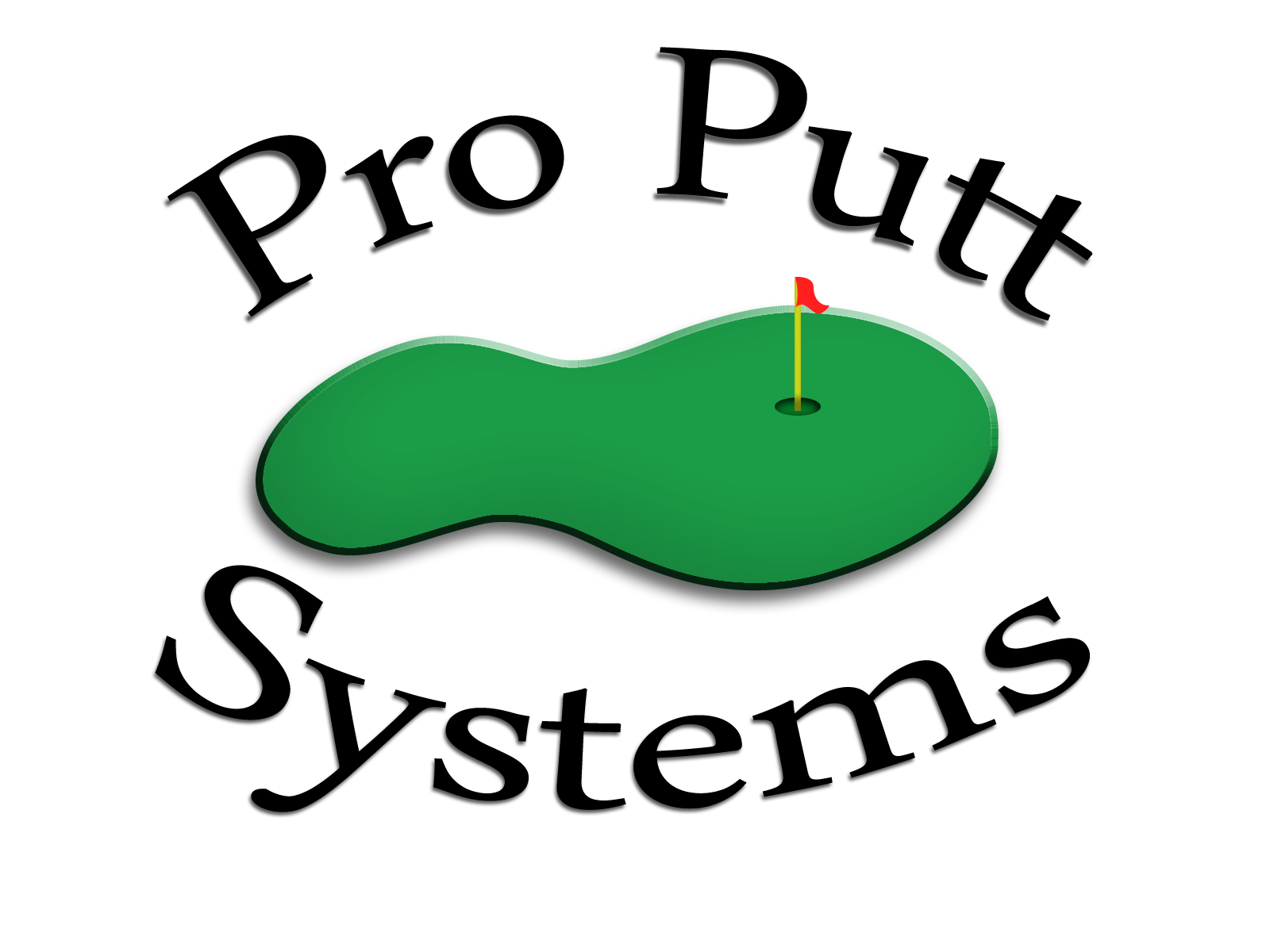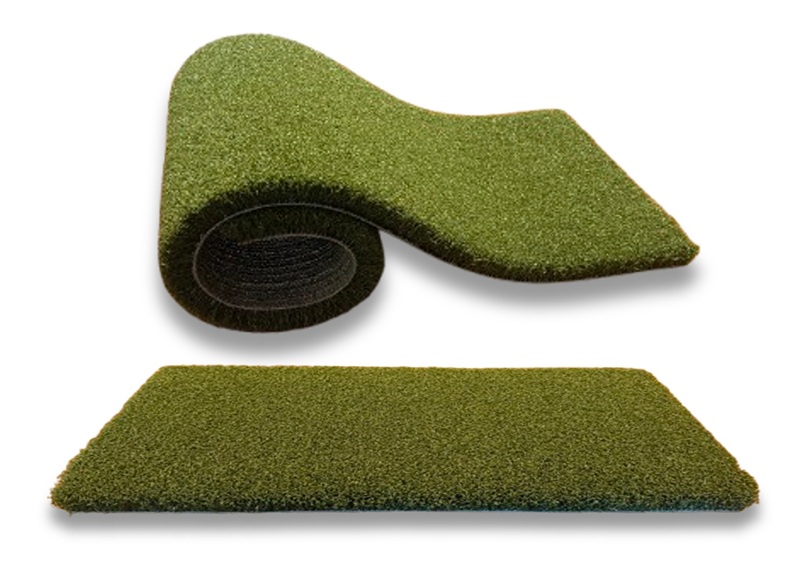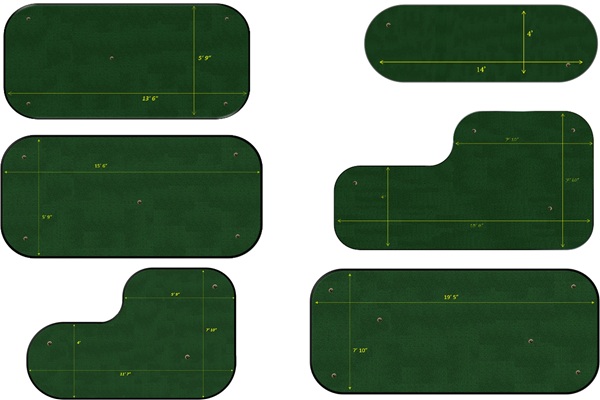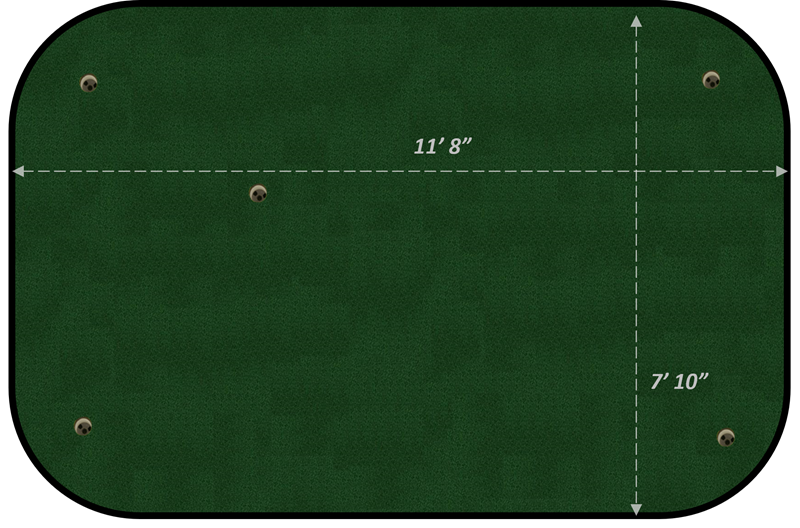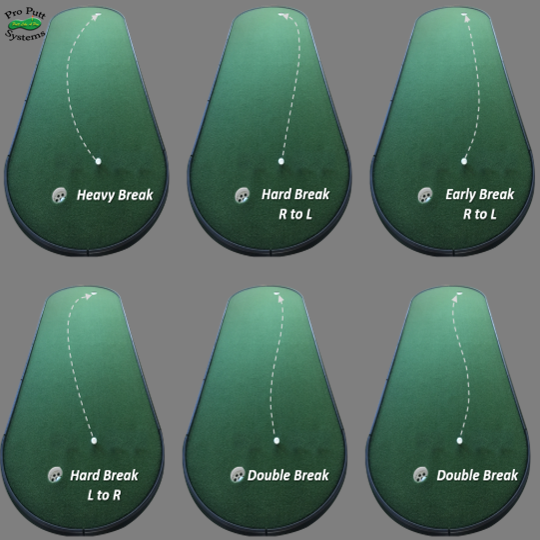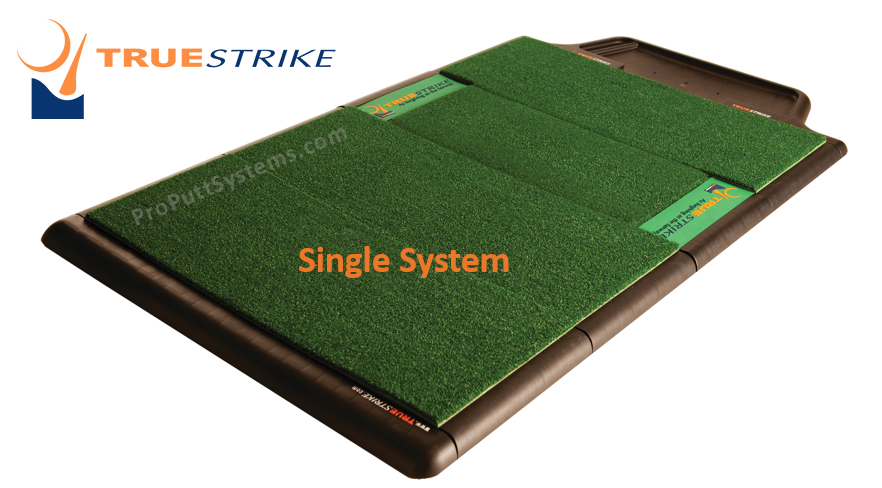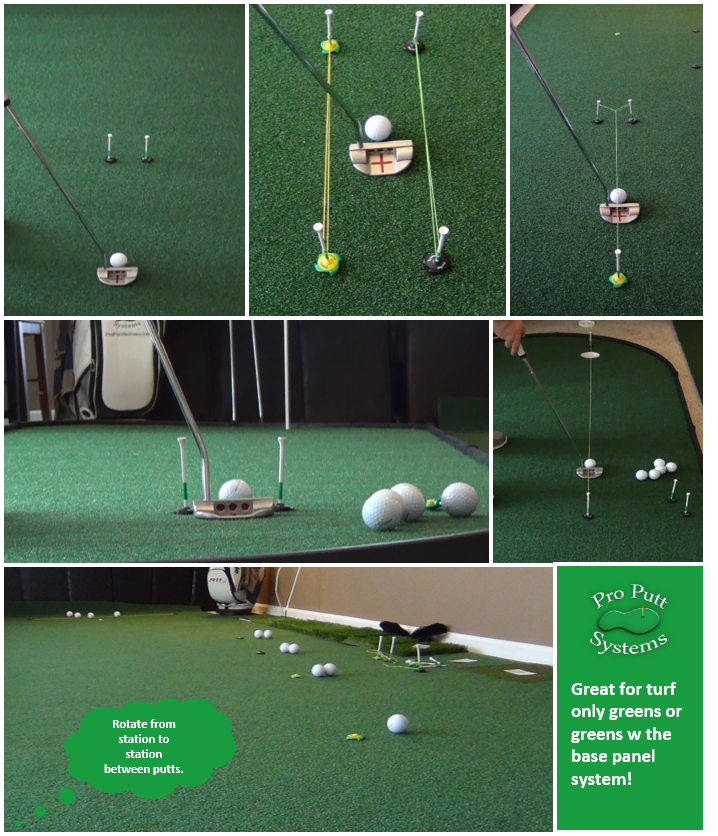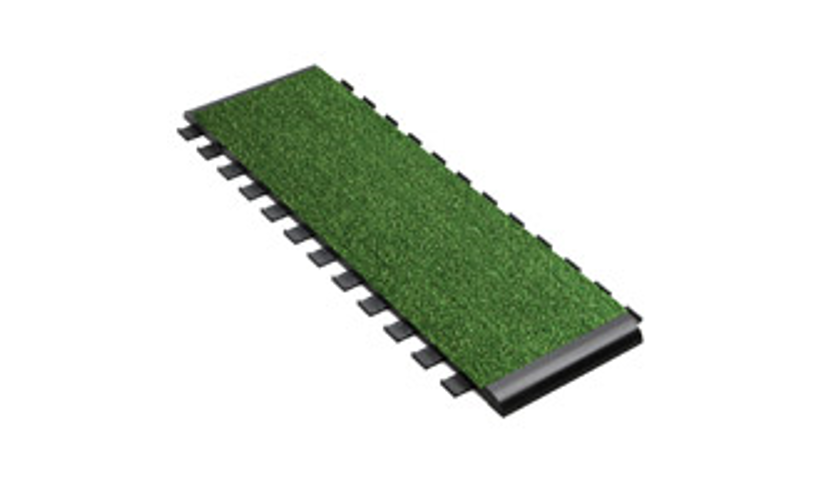Tour Tips: Find Your Stroke at Home and Hone It on the Course
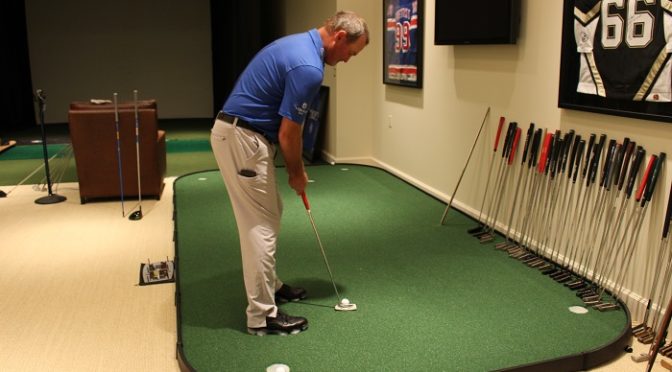
I live in Wisconsin where we have long winters and a shorter golf season than most of the country. My coach and I learned a long time ago that in order to sustain a career as a PGA Tour Player, I would need to find ways to effectively practice at home, during the off-season and during my off-time spent at home with my family.
Over the last 20+ years on Tour, I have spent countless hours using indoor golf as a vital tool to keep my game sharp and work on mechanics from the full swing all the way down to the most important club in my bag, the good old putter.
Even though you may not play golf for a living, if you’re reading this, you certainly want to play up to your potential and just like all avid golfers, you want to improve.

By: Jerry Kelly
By Jerry Kelly – Touring Professional
The fact is that improvement won’t simply happen, there is some work that needs to be done in order to compete in club tournaments, your club championship or even the friendly $5 Nassau with your usual Saturday morning group.
This work, however, doesn’t need to be an endless pursuit. It is quite possible that simple changes to grip, stance or ball position could have a drastic impact on your performance.
When it comes to putting, even the most subtle alteration to one of these aspects of your set-up could save you valuable strokes. Imagine if Jordan Spieth had never tried left hand low, imagine if Hogan had never spent all of those countless hours on hotel room carpet.
In my case, I can work all through the Winter in Madison, Wisconsin, fine tuning my setup and approach and perfecting my craft in my “golf cave” in my home.

Unlike professional golfers, most amateur golfers don’t have hours to spend with a coach or caddy on the practice green tinkering in order to find these minor tweaks that can save a ton of strokes on the green during a round.
The fact is, amateurs do need to employ a tactic that professionals have been employing since the genesis of professional golf:
“Find your stroke at home and hone it on the course.”
If you’re like most amateur golfers I know, you only spend a few minutes on the practice area before your round. The few precious moments you get on the range are usually spent warming up the full swing and very little time is invested in finding that perfect little change in technique which will save you shots.
With so many options in terms of technique, how could you possibly find your perfect stroke on the practice green in 5 or 10 minutes?
The perfect way to find time to work on these things is to set yourself up with an indoor putting green at your home. An indoor putting green will allow you to minimize your time investment and drastically improve your results.
Once you’ve determined that perfect set-up, grip and stance, you can take what you’ve learned to the course on Saturday morning.
Let’s discuss for a moment some of the subtle pieces of your putting technique that need to be considered:
Grip
The grip is your connection to the club and just like the full swing there are numerous options and the grip that works for one, certainly doesn’t work for all.
Left hand-low – this technique has become incredibly popular in the last couple years and many say it has saved their game.
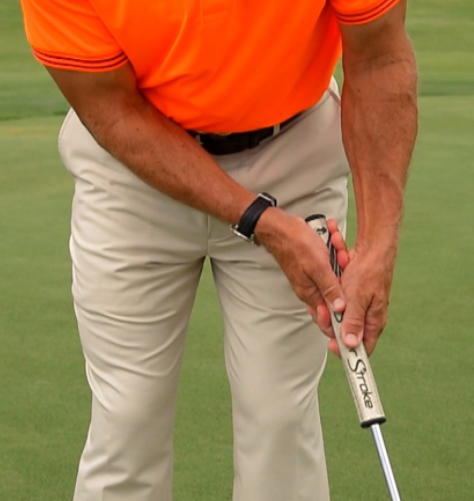 The reasons this technique works for many is because it takes the right hand (for a right-handed player) out of the stroke. The dominant hand is generally the culprit in yippy strokes and it can also cause the stroke to get a bit flippy or handsy.
The reasons this technique works for many is because it takes the right hand (for a right-handed player) out of the stroke. The dominant hand is generally the culprit in yippy strokes and it can also cause the stroke to get a bit flippy or handsy.
There is also an anatomical reason why the left-hand low technique works for some. A conventional right-hand low grip can cause the left shoulder to be too far elevated during the stroke and adopters of the left-hand-low grip feel as though the shoulders are more parallel with the ground both at address and through the swing.
Most importantly the left-hand-low grip requires that the shoulders rock back and through, which is the side effect, now that the hands are largely immobilized. This is thought to contribute to consistency created by a smooth putter stroke.
Immobilizing the hands with this technique mandates the use of large muscles only.
Pencil grip – this is also a grip which is designed to take the right hand out of the shot as only one or two fingers on the right hand are touching the putter.
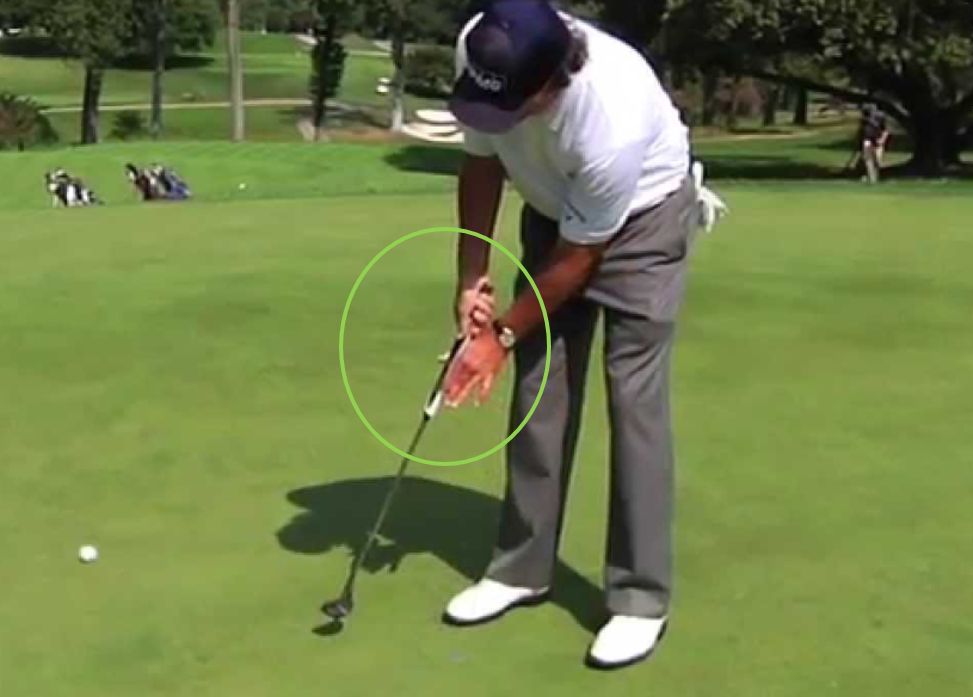
Reverse overlap – this grip is very popular on Tour and has been used since the beginning of golf. For right-hand dominant players, this will be the most popular technique and has been employed for many years. In this case, all five fingers of the right hand are touching the putter grip and the index finger on the left hand is overlapped over the right little finger.
Grip pressure – one of the most common problems I see in amateur players throughout their game is incorrect grip pressure. Far too often I see players who are simply gripping the club too tightly. During a putting stroke, a tight grip pressure activates the muscles in the hands and wrist. These are twitchy muscles and they are conditioned to make quick motions.
I would encourage you to play with your grip pressure on your indoor putting green. Try all sorts of pressure, very light, somewhat light and then firm. You’ll find that your best strokes come when your grip pressure is just tight enough to control the club head.
If you are having a problem from inside 8 feet, or Money Putts as we call them on Tour, focus on the lightest grip pressure possible and you’ll find you hit more of these essential putts than ever before.
Stance
While your grip is your connection to the club, your stance is just as important as it is your connection with the only real constant, the ground.
Open stance – when your left foot is open to the target, your stance is considered open. Fuzzy Zoeller, for instance, spent his entire career with an incredibly open stance. He felt as though this gave his right eye the ability to see down the line better. If you are a player who finds they are heavily right eye dominant, this may be the best fit for you.
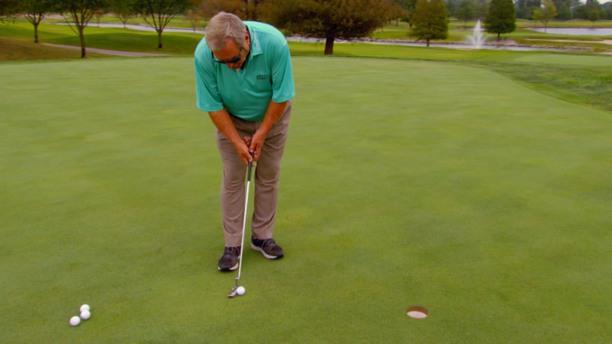
Photo: GolfChannel.com
Closed stance – when your right foot is pulled back and closed to the target line.
I am a player who found the closed stance worked best for me because after countless adjustments it helps me keep the club traveling in a steady and repeatable stroke.
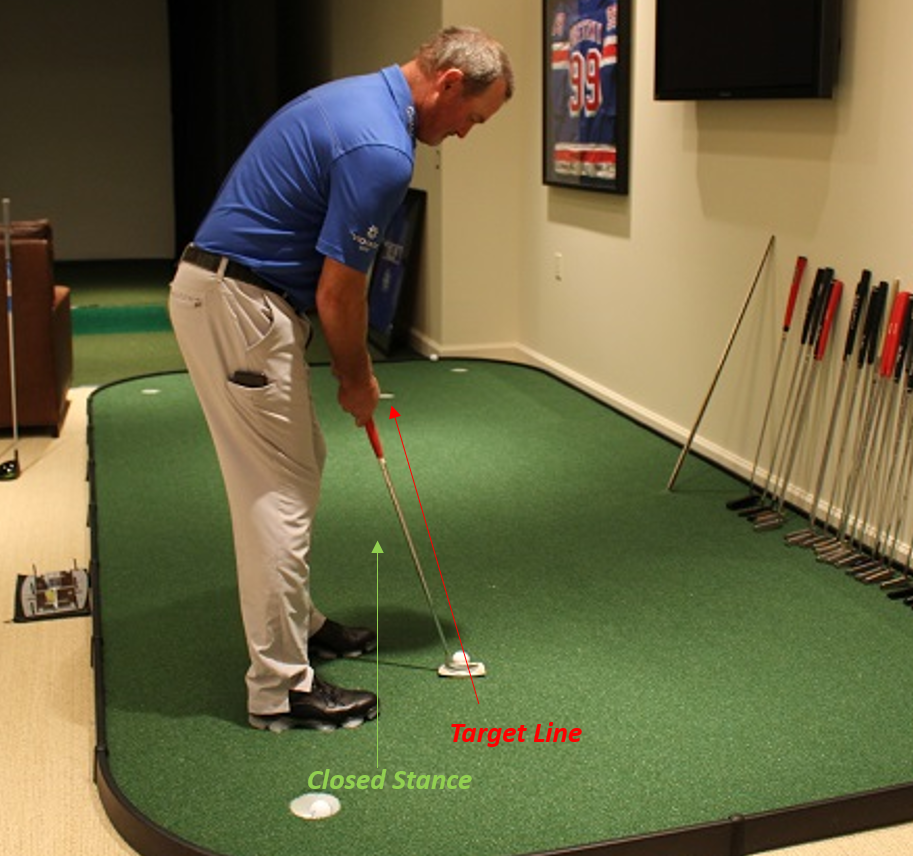
Shoulder squareness – when your shoulders are square, they are perfectly parallel to the target line. In almost all cases, even if a player’s stance is closed or open, the shoulders will be parallel to the target line. Opening the shoulders can lead to the putter face coming open at impact and thus, you get pushed putts.
Feet wide or feet closer together – through the years both wide and tight stances have worked and this will be a matter of feel. However, you’ll want to play with both because if you are playing your club championship and the wind is gusting 20 miles per hour or more, you will want to consider exaggerating the width of your stance to gain stability.
Weight Distribution – an important consideration when considering the width of your stance is where you tend to place the majority of your weight, which is another great thing to tinker with on your indoor putting green. Weight slightly forward or weight centered being the most common, try both and determine your best technique.
Ball and Eye Position at Address
Ball Position – when it comes to ball position let’s discuss where the ball sits, left to right, between your feet. Ball forward will be more toward your left foot and ball center would be directly under your eyes in the center of your feet.
The position at address can be incredibly important to you as many players will play from wherever they set up. On one hole it will be centered and the next hole it will be toward the front foot. Consciously and consistently addressing the ball in a single position can lead to better putting all by itself.
Eye position – in this case, I want to discuss where the ball sits relative to the eyes on the inside, directly on, or outside the target line. A conventional and consistent set-up is commonly thought to place your eyes directly over the ball and directly over the center of the target line. However, varying styles of putters will dictate where your eyes are relative to the target line. A longer counterbalanced putter will require that your eyes are inside the line and the ball may be outside the line. A player who prefers a short putter may be the opposite.
One of the reasons why eye position is so important to you is because once the eyes are set-up and you make your stroke, you want to be sure that your eyes make your head to stay still. Once the eyes are set, maintain that position throughout the stroke.
Never in history has there been a great putter who allows their head to move during the stroke, keep that head still.
Aspects of the Stroke
This is where you will need to try a number of varying styles in order to find the one that is best suited to your feel. If your stroke becomes too technical and you are no longer using your most important golfsense, which is feel, you are in trouble.
Length of follow through – there are varying styles on the PGA Tour. Some players like to feel a longer follow through after shorter backswing, while others will prefer the opposite, a shorter backswing and longer follow through.
Practice stroke or no practice stroke – a very well known short game instructor on Tour will tell you that you are wasting your best stroke with a practice swing. Simultaneously, many of the best putters in history have utilized a practice stroke prior to addressing the ball.
Tempo of stroke – playing with varying tempos, on varying length putts will flesh out a method that creates the most consistency for you. When considering tempo, don’t just think about the actual speed of the putting through stroke, think about the speed of the backstroke as it relates to the through stroke. There have been very good “pop stroke” putters like Brandt Snedeker and there have been silky smooth like Jordan Spieth.
Here are the things I think are important when addressing a putt:
The key is a simple, quiet approach. I like to stay steady over the ball, quiet in my lower half and, most importantly, I follow the same routine each and every time. That routine removes the nerves and filters out any unnecessary distractions. Putting is consistency, and consistency is developed through repetition.
Repetition
Repetition is one of the most important factors in honing a great putting stroke. It is practically impossible to find and hone a great stroke in those 5 minutes at the practice green before your round.
Once you have found the method that works best for you, it will make sense to have a way to build muscle memory and create that repeatable stroke. This is where your indoor putting green really comes into play.
In pressure situations, like an 8’ par putt to win that match, won’t it be nice to summon the simple memory of hitting that putt hundreds of times back in the comfort of your home. Use those great memories from home, to visualize your on course situations and minimize pressure.
A note about repetition – repetitive practice of the wrong stroke will not help, be sure you have found your perfect stroke.
To recap, here are the things you will want to tinker with while discovering your perfect putting stroke:
- Grip
- Stance
- Ball and Eye Position
- The Actual Stroke
then…
- Repetition
With so many options, be sure you are playing with different things and keeping an open mind when it comes to your putting.
A simple change discovered at home on your green, could shave strokes off the handicap.
Take a moment to look at my favorites from our product line.
by Brett Joy

